ATV 4 launch 5 June 2013: L – 1 month
ATV transfer to BAF: 6 May (postponed to Tuesday, 7 May)
Note: The latest update from Charlotte Beskow’s mission diary from ESTEC and Kourou – Ed.
11-12 April – Thursday-Friday – Kourou-Paris-Toulouse
Time flies… I left French Guiana on 11 April just as the final step of fuelling the Russian tanks got under way. If felt a bit like leaving a race mid way. You stop and everyone else keeps running, cheerily waving as they speed by.
I headed back to Europe and to ATV-CC, Toulouse, where a multi-day simulation was scheduled for the following week. Like many of my colleagues, I have multiple roles. One role is to manage the day-to-day business of the launch campaign in Kourou, while another is to set up the Engineering Support Team (EST) in ATV-CC.
Upon arrival in a chilly, but sunny, Europe on Friday morning, I headed for the office in Toulouse where a Joint Control Board meeting was taking place. These serve to iron out the multitude of interface issues between what we call the ground segment, that is:
- The ATV Control Centre and all the communications infrastructure across the US and Europe and up to the ISS
- The flight control team (who operate the ATV once it is in orbit)
and the flight segment (who produce, assemble and launch the ATV). We hold these boards on a regular basis and people participate in person or via telephone depending on where they are.
13 April – Saturday
In Kourou, the team starts loading Oxygen (33 kgs). There is a slight delay so the operation is stopped at the end of the last shift, to be continued Monday morning.
15-18 April
At ATV-CC: a multi-day simulation of the attached phase. This was a busy week indeed! The simulation team did their level best to test our knowledge and resourcefulness. One failure after another ‘perturbed’ the smooth running of the attached-phase operations. This is precisely the purpose of a simulation. We get to see and test a number of scenarios that we will hopefully never encounter in real life.
Coming after four weeks of intensive work in Kourou, though, it was not exactly a relaxing week – but I thoroughly enjoyed it and the atmosphere was one of interesting anticipation. The team I work with are all very experienced and have done the actual system integration and testing. The interesting thing with simulating complex failures is that when you put everything together (experts and control centre staff), new questions arise and a number of interface/procedure mismatches come to light.
Over in Kourou, the teams have finished loading oxygen (April 15) and air (April 17), ca 100 kgs in total. Bravo! Next in line is ATV fuel. MMH and MON. MIP 42 (Main Inspection Point Part 1 – MMH) takes place in the afternoon and this is followed by an inspection of the set-up.
19 April – Friday
Slightly tired after these five to six very intensive weeks, I travelled back to Holland.
Across the Atlantic, the teams start loading the MMH: Mono Methyl Hydrazine. This is a noninterruptible hazardous operation, which finished in the early hours on Saturday, 20 April.
In the meantime, the ISS crew are doing a space walk (EVA – Extra Vehicular Activity) in order to replace an item on the ISS which ATV needs in order to make its approach.
The laser reflectors (LRR – Laser Radar Reflector) are used by the videometers on ATV from 250 m until docking. The image reflected off the ISS is analysed and processed by ATV software in order to calculate, with high precision, the precise approach path. In the post-flight analysis of the previous flight (ATV-3), engineers saw data that led them to conclude that the reflectors had potentially suffered contamination. This is not surprising since they are mounted on the external side of the ISS.
There are several potential causes of such degradation: orbital debris; fuel droplets from the thruster burning during arriving and departing vehicles or even fuel droplets after purging the refuelling lines to the ISS. The effect on the mission is that the ATV software might ‘conclude’ that the image received is not good enough to continue the approach, thereby commanding the vehicle to perform an ESCAPE manoeuvre when one isn’t really necessary. The ISS partners therefore agreed to add time to an already planned EVA in order to perform the replacement task.
The replacement was successful. The laser retroreflector will be returned to Earth for analysis at some point in the not too distant future.
[See the video replay here – Ed.]
22-23 April – Monday and Tuesday
FAR colocation. FAR is the Final Acceptance Review: The review process has been ongoing since 10 January and hundreds (if not thousands) of documents have been delivered to the ESA teams.
These documents provide the manufacturing and acceptance history of every system/subsystem and unit that make up the ATV. They also describe all the tests (test plans, test procedures and test results) and all the changes, non conformances and requests for waivers that apply to ATV-4.
We have been working our way through these documents since the start of the year and the colocation is the final discussion between the customer (ESA) and the supplier (Astrium) to resolve any open points and to identify any potential show-stopper. Some actions are still ongoing (the launch campaign is not yet finished), so all the open work also has to be tracked.
On the Ground Segment side, there is still one major simulation to run: the Mission Rehearsal 15-16 May. This simulation, contrary to most of the other ones, will be without failures, giving us a chance to put the final touches on routines and procedures and get into the right frame of mind before flight.
On the ATV side things are looking good.
24 April – Wednesday
Progress 51 P is launched. During the initial flight, controllers see that the Kurs antenna is not deployed. This Progress will use the same docking port as ATV. In the next 24 hours a decision has to be taken whether or not to go for docking. The main concern is the clearance between the folded Kurs antenna and the sensors that ATV rely upon to get to the ISS.
The arrow points to the folded antenna
In Kourou, Main Inspection Point (MIP)-42 Part 2 gives the thumbs up for MON loading (MON: Mixed Oxide of Nitrogen). This is the last and final step of gas and fluid loading operations.
25 April – Thursday
MON loading starts in Kourou. As with MMH loading, this is a three-shift hazardous operation involving teams dressed in SCAPE suits (they look like diving suits and completely protect the operator from potential fuel spills).
26 April – Friday
RSC Energia (RSCE) has concluded that the risk to ATV sensors on the ISS is low. There is enough clearance even with the Kurs antenna in the folded position. My colleagues and I listen to ground controllers handling the incoming Progress flight. The approach is done ever so gently and once the probe head is captured I hear ground controllers asking crew to listen carefully for any unexpected sounds such as crunching or grinding.
The crew reports that they didn’t hear anything unusual. The crew also offers to “pop outside and take a look.” Ground control catches her breath a bit and says, “You mean an EVA?” ”Sure” they answer, ”We are ready.” Unfortunately an EVA is not something you just do. Apart from being dangerous, it is also costly in terms of time and resources so is only done if really necessary. There will no doubt be many meetings in the coming days to decide if something needs to be done before ATV is launched.
On ATV side things are progressing well.
A test of the communication interface with ATV-CC is successfully concluded. This test showed that the redundant communication link between ATV-CC and ATV via the Kourou test equipment works as planned. The nominal link had already been tested.
The fuelling test director sends us the following message during the day:
After:
14 Procedures,
18 Meetings,
22 Transports,
31 Hazardous Operations,
249 hours in SCAPE,
2160 litres of Liquid Nitrogen,
505,000 litres of gas,
I am happy to announce that the ATV-4 propellant and gas loading operations are now complete.
Another step on the road to launch has been completed!
After some other normal post-loading tasks, ATV will be ready for transfer to the BAF (Batiment Assemblage Finale), where the launcher is ready for us. This transfer is planned on Monday, 6 May.
Now we just have to cross our fingers for the Vega launch so that the CSG resources can be freed up for ATV.
It went! – Ed
30 April – Tuesday
Strike in Cayenne delays the arrival of the final cargo items, but it is a short delay with no real impact on operations.
The final cargo items will be loaded on 14-15 May with ATV in the vertical position on top of the launcher.
3 May – Friday
FAR Board. The presentations for the Board are well prepared and a positive outcome is achieved before lunch. Vega countdown is set to start, launch is in the early hours of Saturday.
The main discussion point was on the potential effect of 51P docking. Had it damaged the laser retro reflectors or not? Trouble is we have almost no way of knowing.
4 May – Saturday
Vega launch was postponed due to weather conditions. It is the rainy season…
6 May – Monday
Transfer to BAF is postponed to the early hours of Tuesday morning due to Vega delay.
7 May – Tuesday
Vega launch is successful!!
Much lighter than an Ariane, Vega speeds off like an arrow.
It carried three satellites: Proba-V (for ESA), VNREDSAT-1 (an Earth observation satellite for Vietnam) and ESTCUBE (a small experimental satellite from Estonia).
Just to put things into perspective:
ATV is about the size of a London double-decker bus; Proba-V and VNREDSAT are about the size of large washing machines and ESTCUBE corresponds to a litre of milk!
Mid-April: Proba-V team giving us a look at their satellite in the clean room. The ESA website has plenty of pictures as well as a replay of the launch.
Now I am on my way to Toulouse for the mission rehearsal…
Time flies…!
– Charlotte

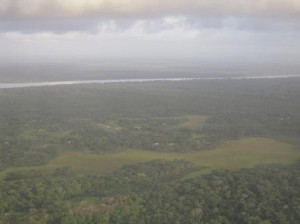
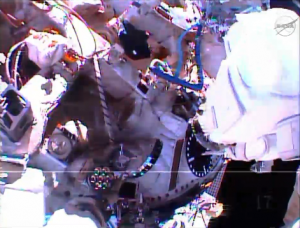
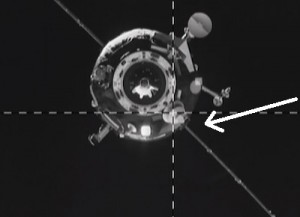
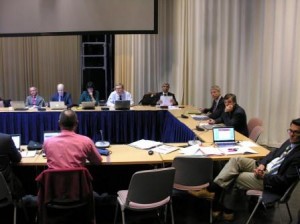
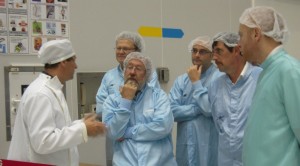
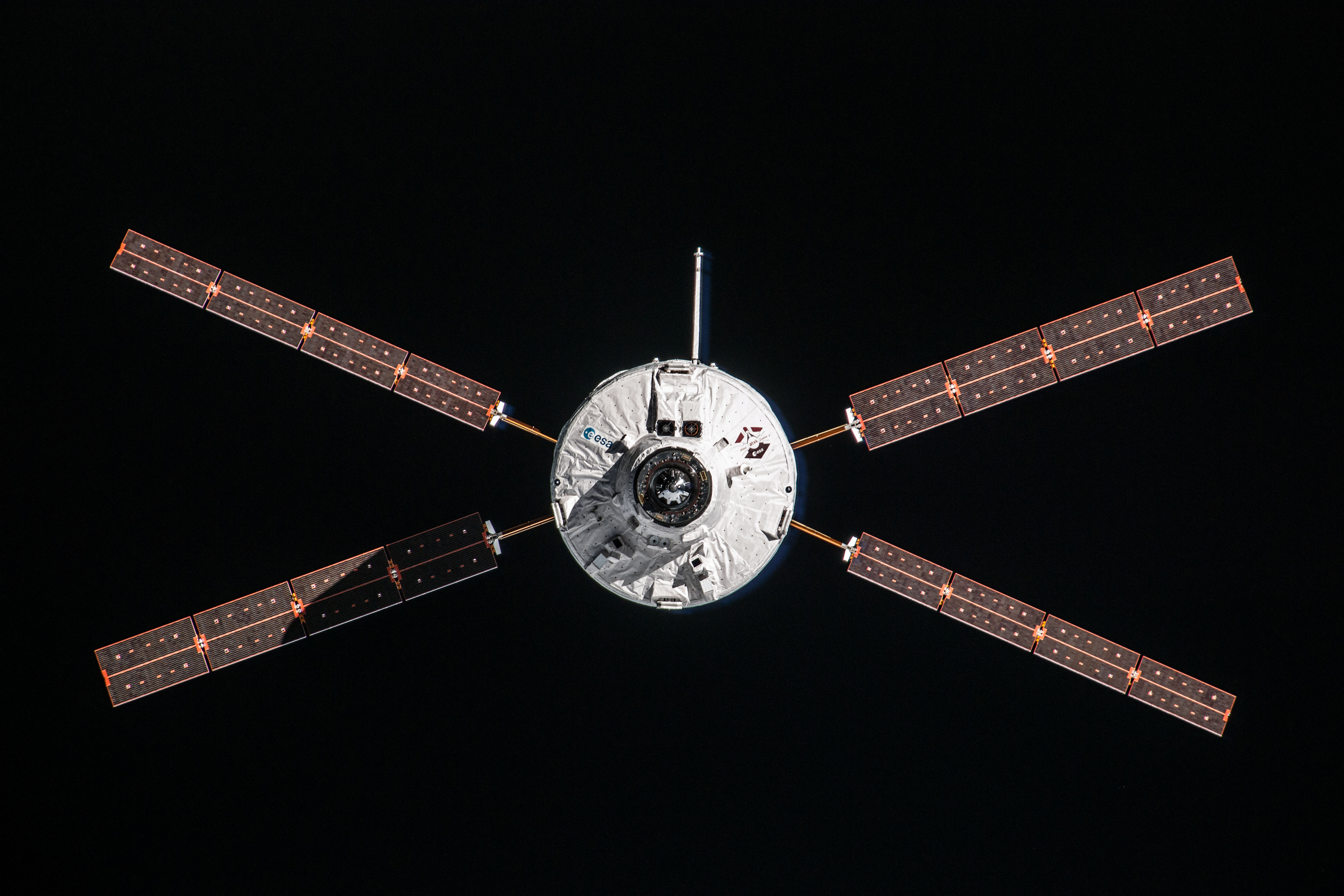 Automated Transfer Vehicle page
Automated Transfer Vehicle page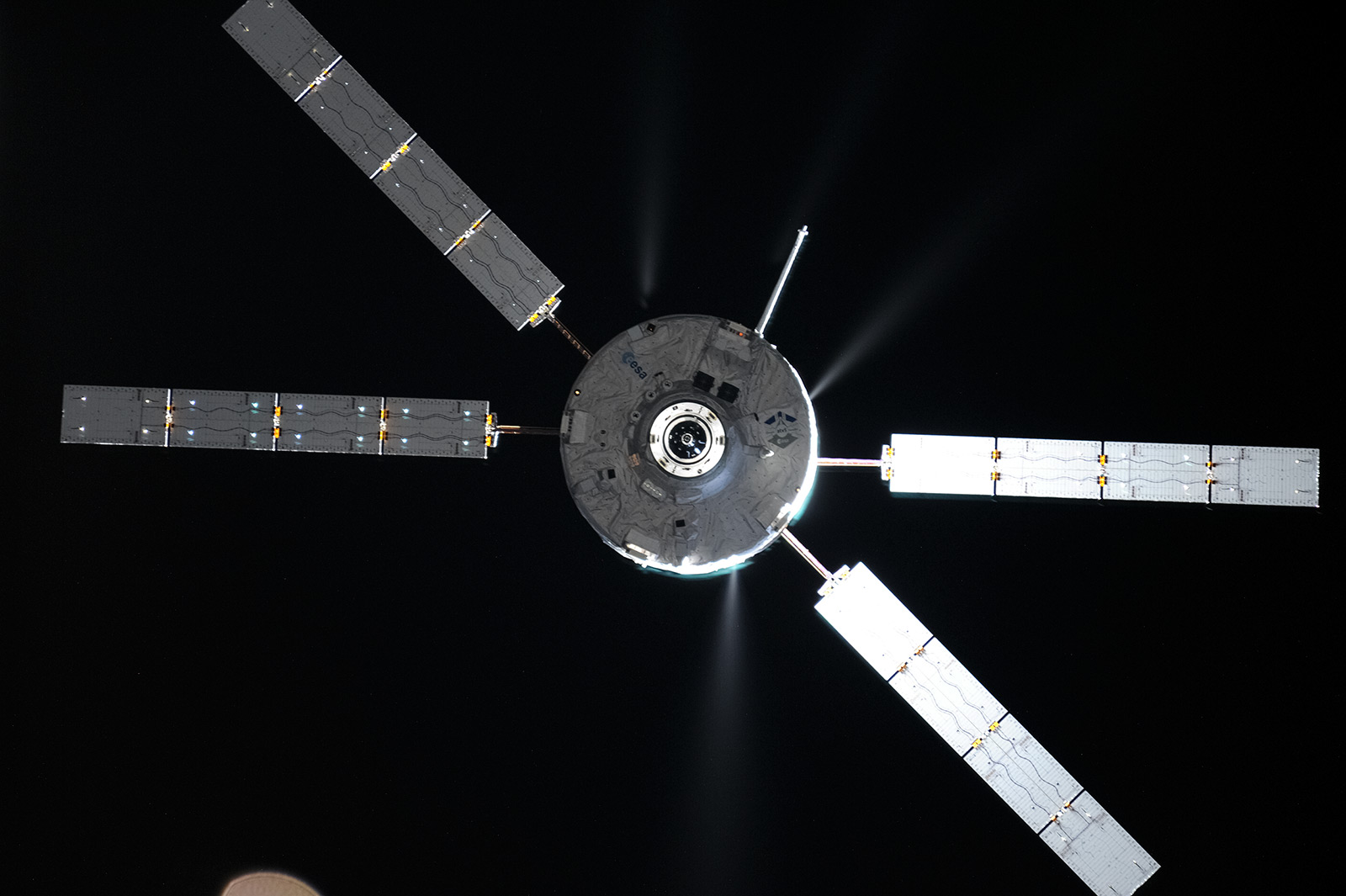 ATV blog archive
ATV blog archive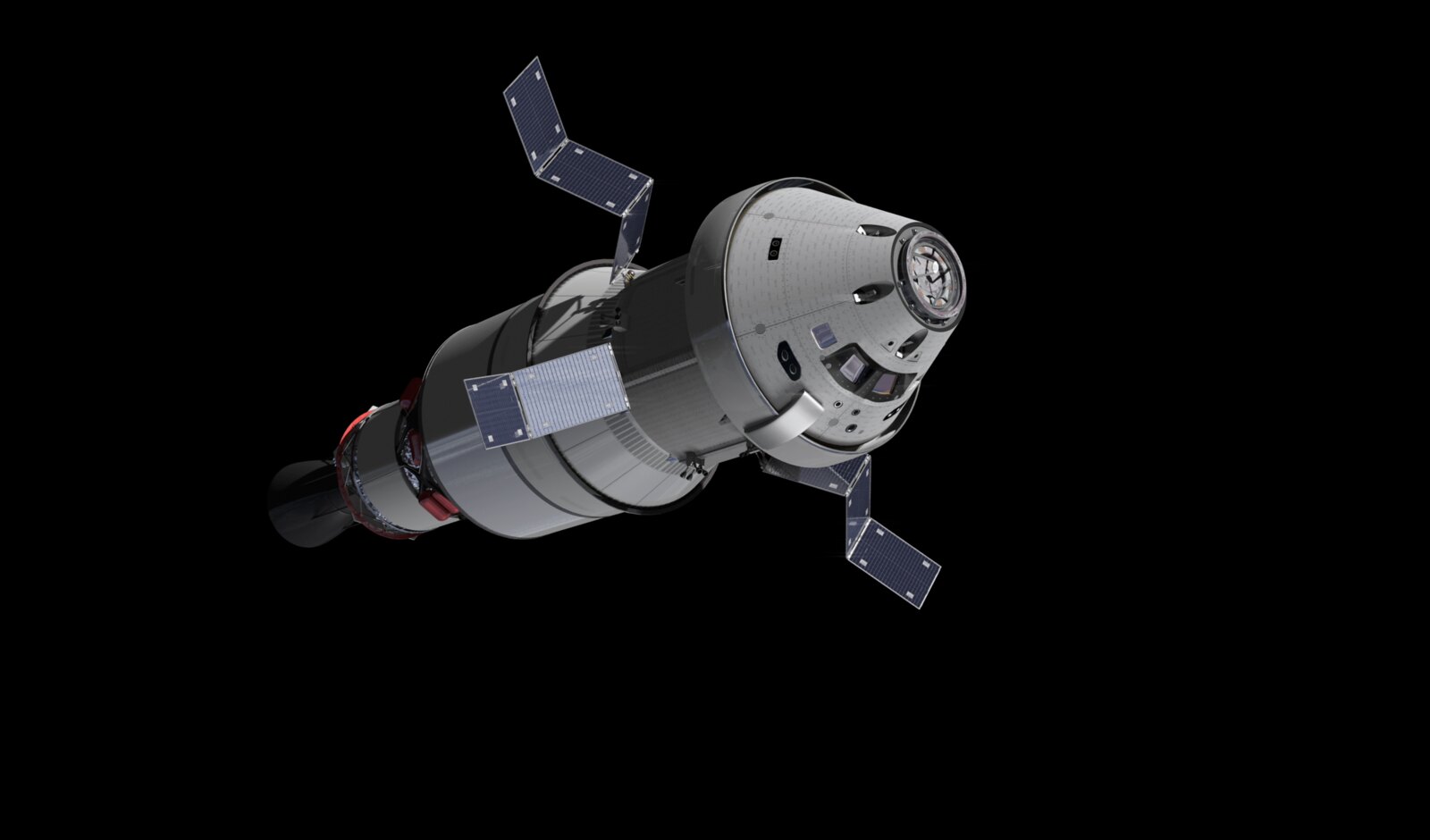
Discussion: no comments